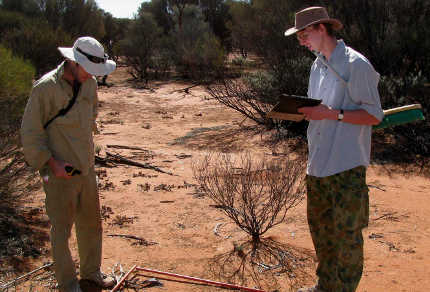Western Australia, Day 4
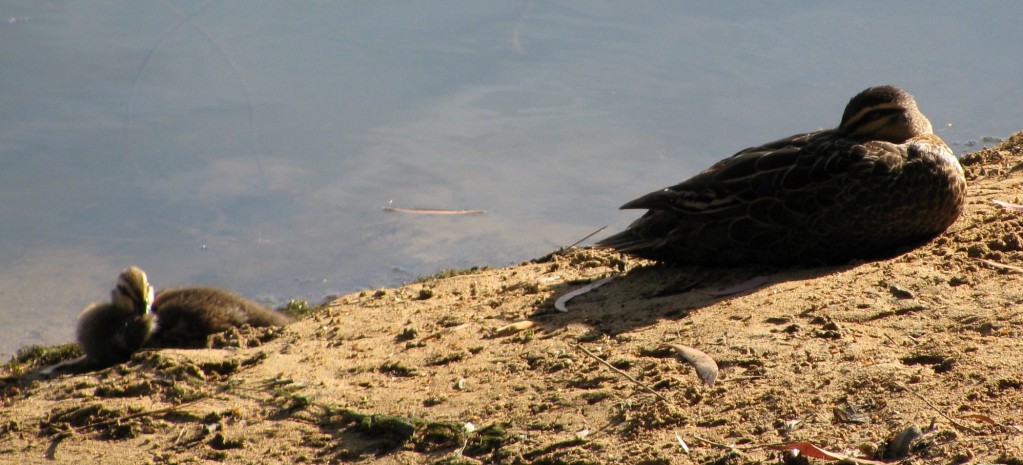
Pacific Black Ducks Basking (© Magi Nams)
Townsville: A wild wind tugged dead leaves from trees and scattered them through the air like beige confetti as I cycled to Pioneer Park in Thuringowa. The river was choppy, and in the park, tree branches rubbed on others, squeaking in the wind. Pacific black ducks floated in small flotillas on the rough water and basked on the far shore in the company of masked lapwings. A jabiru or black-necked stork glided above the river on the wind, with its long, red legs trailing and the black mid-strip on its white underwings fully exposed. It was more graceful than I expected. A Brahminy kite carrying a branch for its nest dropped the prize and dove to recapture it. The voices of rainbow lorikeets and songbirds were nealy drowned out by the wind, and my skin puckered into goosebumps when I stood in the shade – a first for me in Townsville.
Western Australia: Sampling vegetation was the order of the day for the research crew. On transects in the vicinity of each camera trap, they paced out distances, placed a metal 1-metre x 1-metre quadrat over the vegetation, and estimated the proportion of the ground area covered by different plants. Since the landscape was desert, they had many quadrats with zero plants. They also clipped vegetation within a small subsample of the quadrats to calculate the biomass (amount) of different plants. Again, many zeroes.
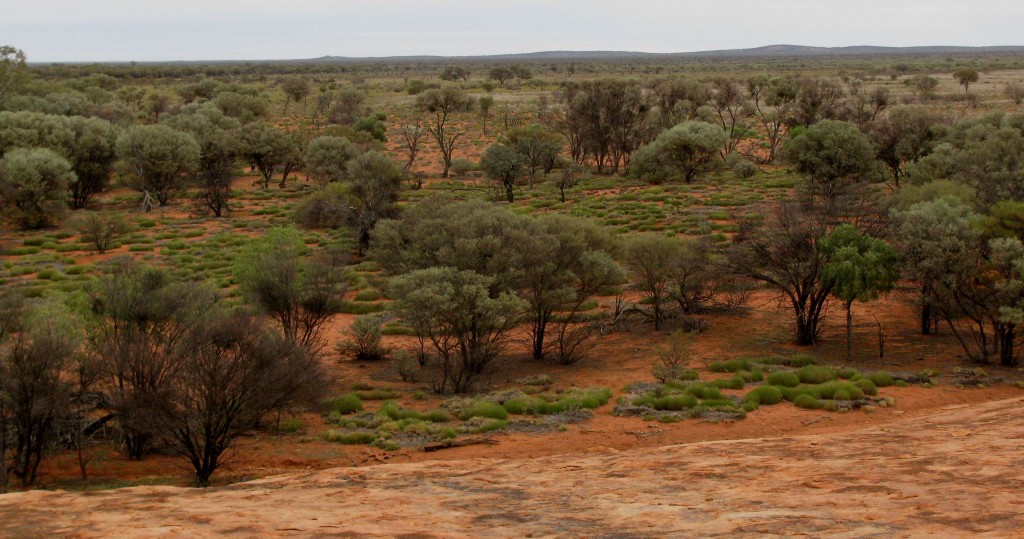
Spinifix Grasses and Acacias (Mulga) on Yakabindi Station (© Vilis Nams)

Gus and Janis Quadrat Sampling Desert Vegetation at Yakabindi Station (© Vilis Nams)
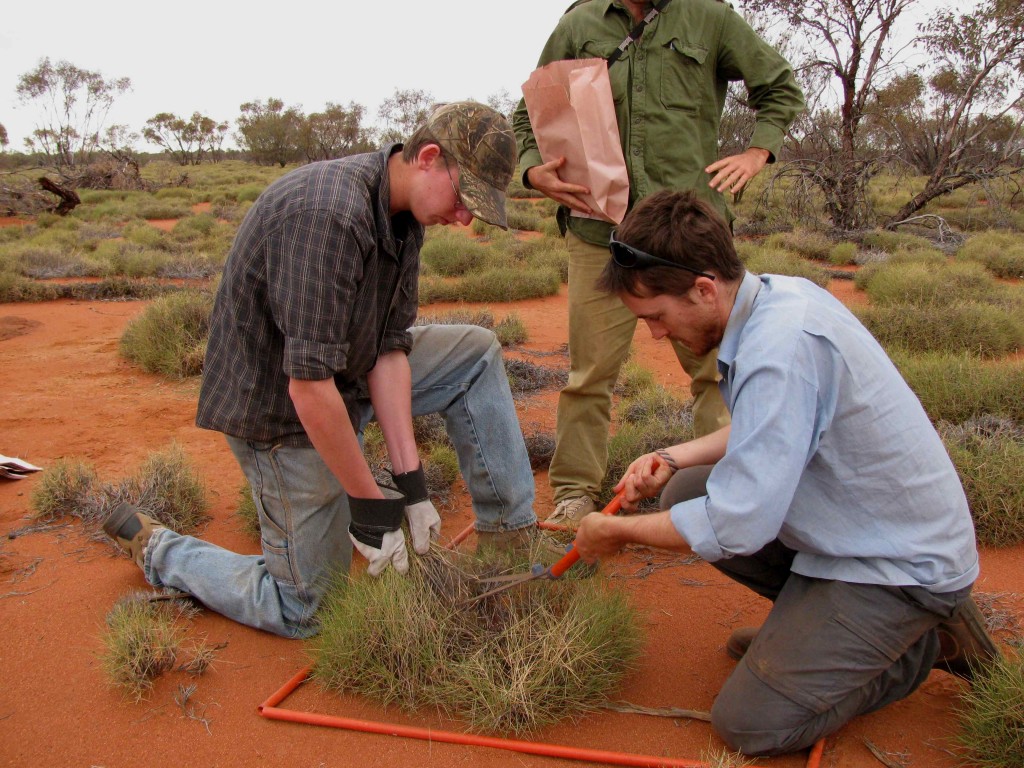
Janis and Euan Clipping Plant Biomass on Yakabindi Station (© Vilis Nams)
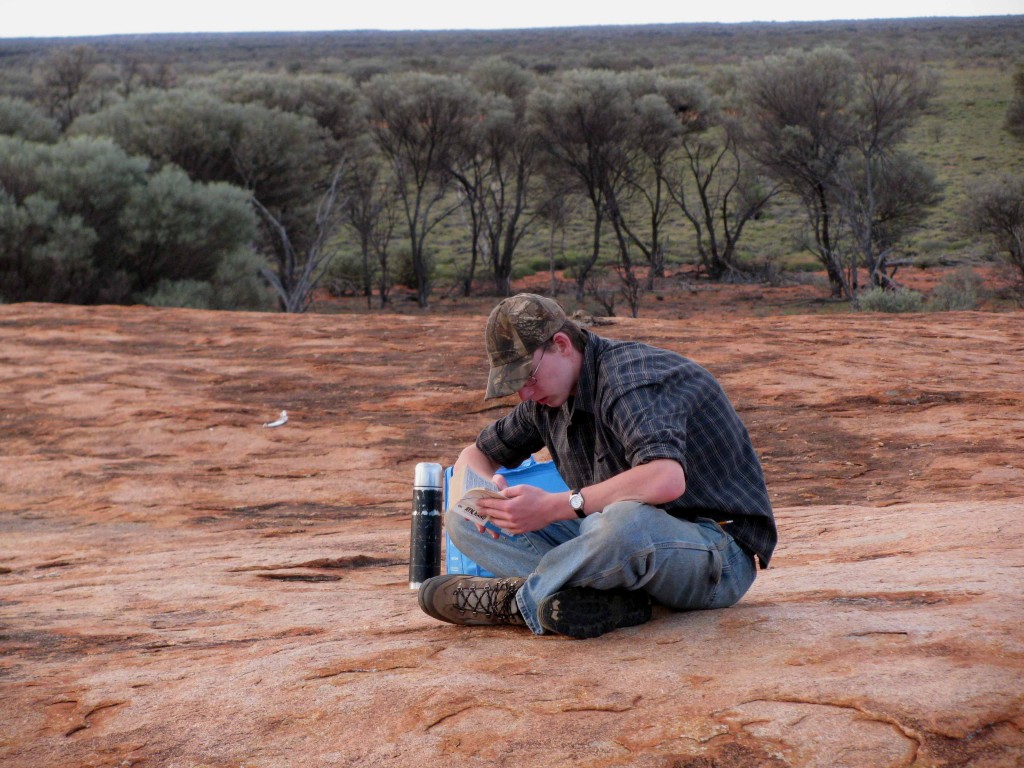
Janis enjoying a book during Smoko (Coffee break) (© Vilis Nams)
On Yakabindi, solar panels powered bores that supplied cattle with water, and one-way gates regulated access to and from water, although natural water holes existed, too. The station was enormous, covering 2500 square kilometres, so the research crew spent a lot of time driving from one sampling site to another. Red kangaroos and wallaroos, the natural prey of dingoes, were very abundant on Yakabindi, but because dingoes are hunted and poisoned on this station, they were very wary of humans, disappearing in a flash when they caught sight of the research crew.

Water Tank and Solar-powered Bore, Yakabindi (© Vilis Nams)
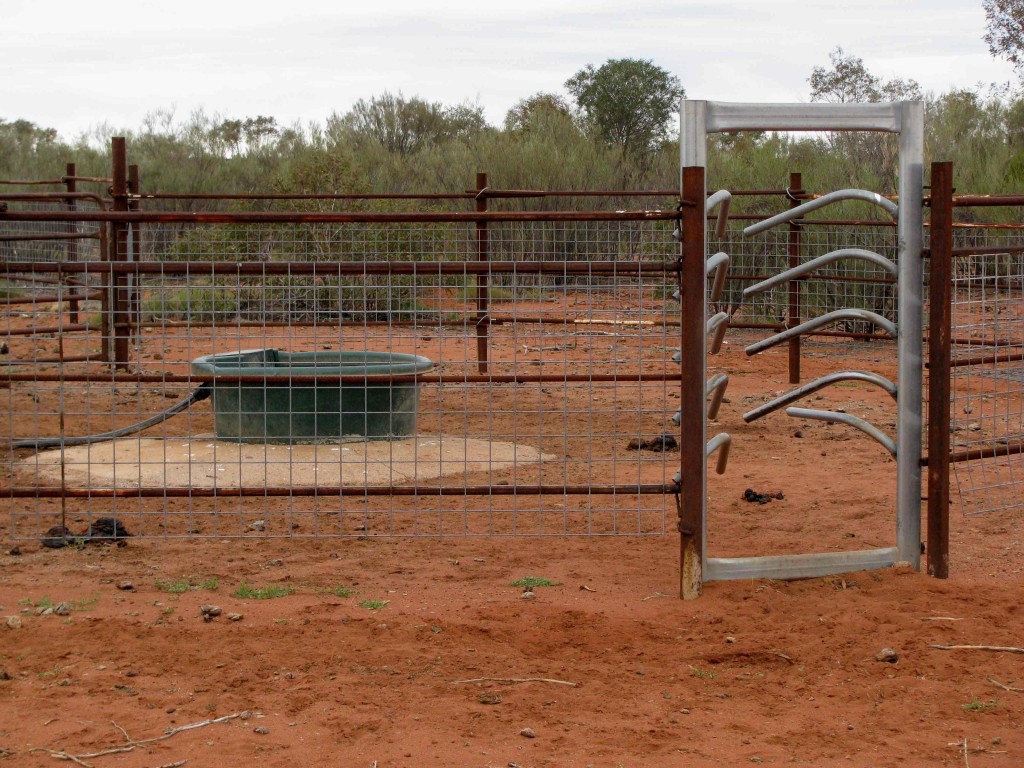
One-way Cattle Gate on Yakabindi Station (© Vilis Nams)
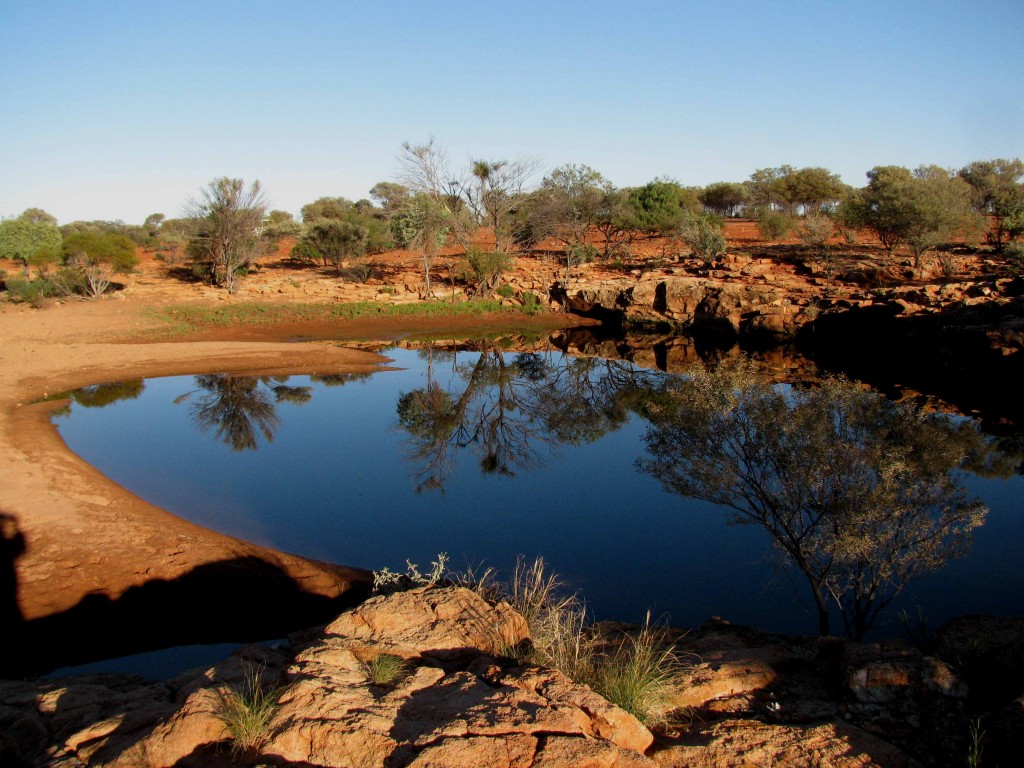
Dingo Pool, Yakabindi (© Vilis Nams)
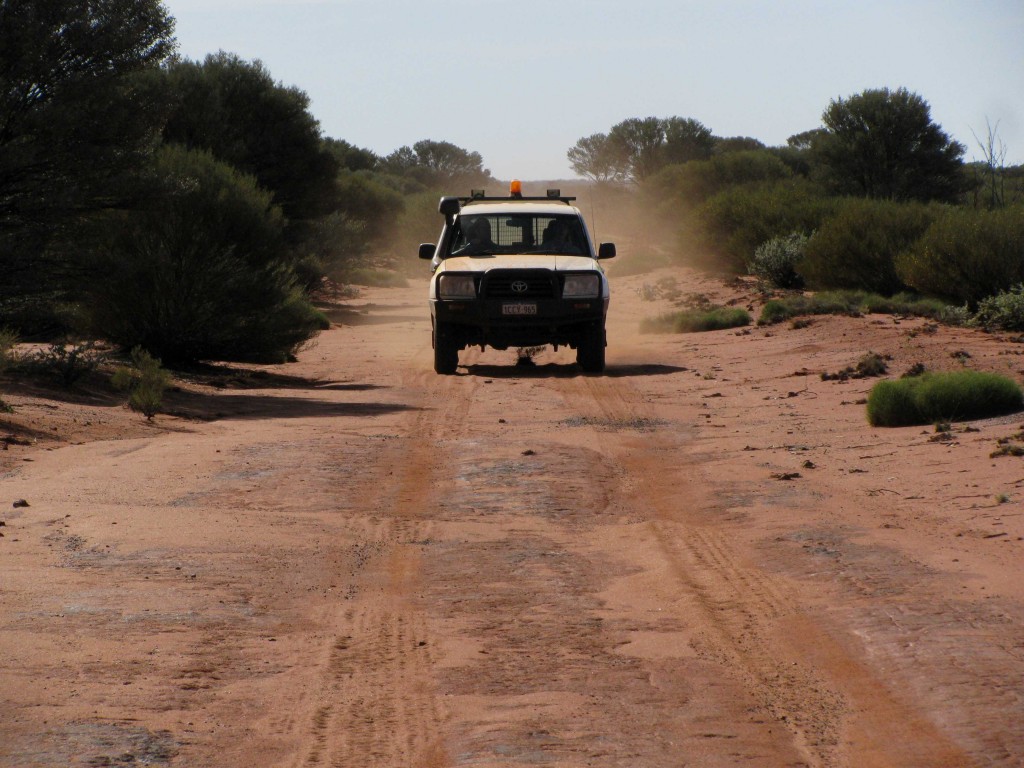
On the Road on Yakabindi Station (© Vilis Nams)
The research crew’s field camp was a donga in the station compound having a lush, irrigated lawn that offered a stark contrast to the surrounding desert landscape. After dark, Vilis, Janis, Euan, and Gus went out spotlighting for wildlife, using the reflections from animals’ eyes to pinpoint their locations, and then identifying the wildlife in the beams of the trucks’ headlights or the spotlights.
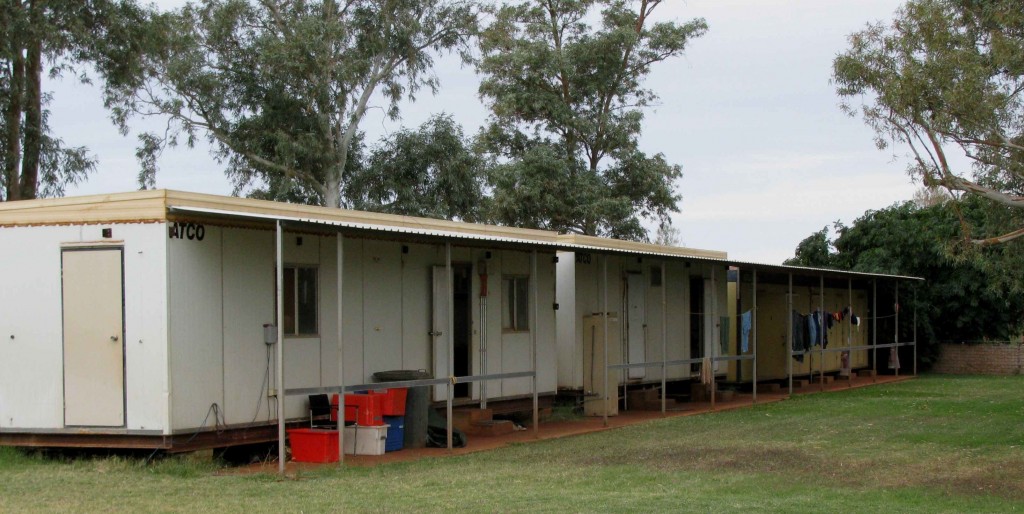
Donga at Yakabindi Station (© Vilis Nams)
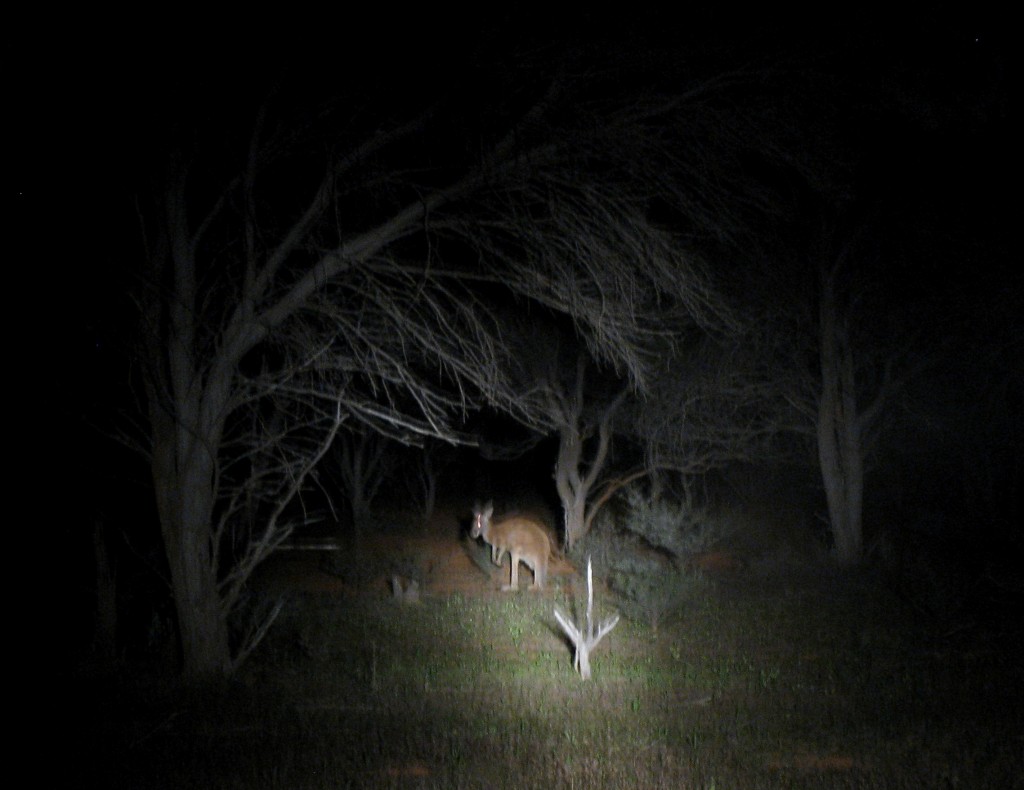
Spotlighting Wildlife (probably a wallaroo) (© Vilis Nams)
Today’s bird list: white-breasted woodswallow, welcome swallow, green figbirds, magpie-larks, Pacific black ducks, masked lapwings, black-necked stork, Brahminy kite, rainbow lorikeets, white-gaped honeyeater, Australian white ibises, anhinga.

